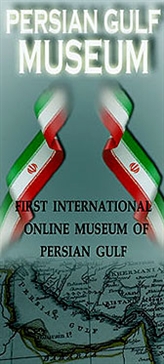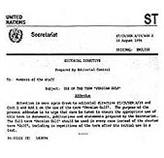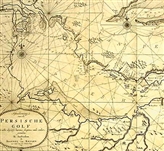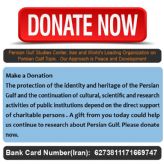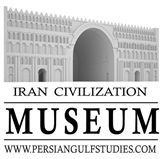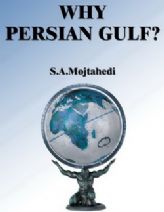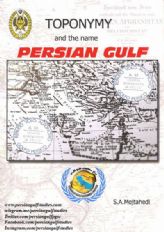Museum of Achaemenid Iran
Some Part of Achaemenid Treasures
(550 BCE – 330 BCE)
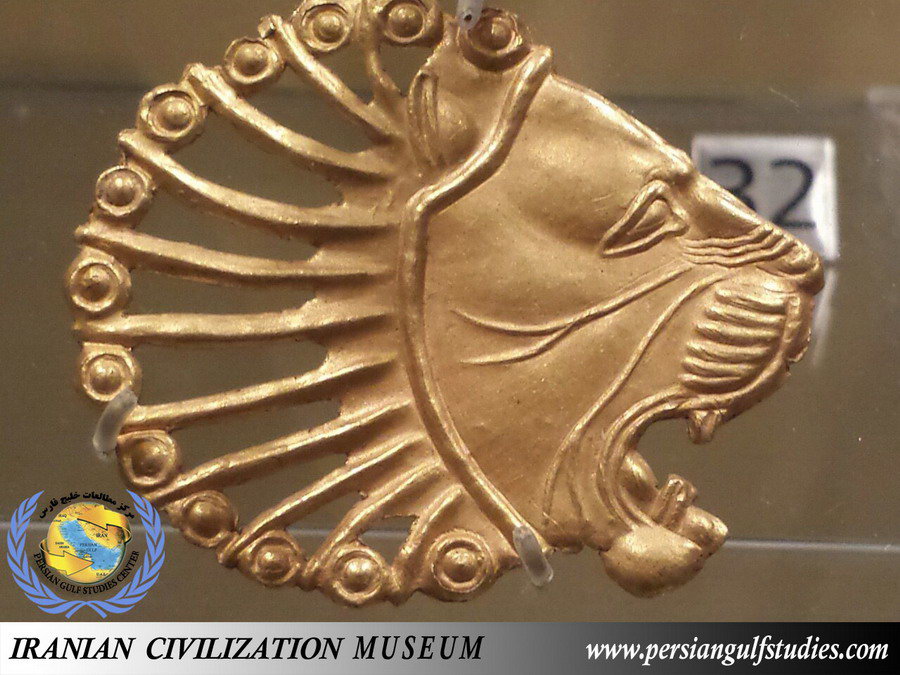 Bobby pin with lion symbol, mid 5th century BCE, Royal Ontario Museum.
Bobby pin with lion symbol, mid 5th century BCE, Royal Ontario Museum.
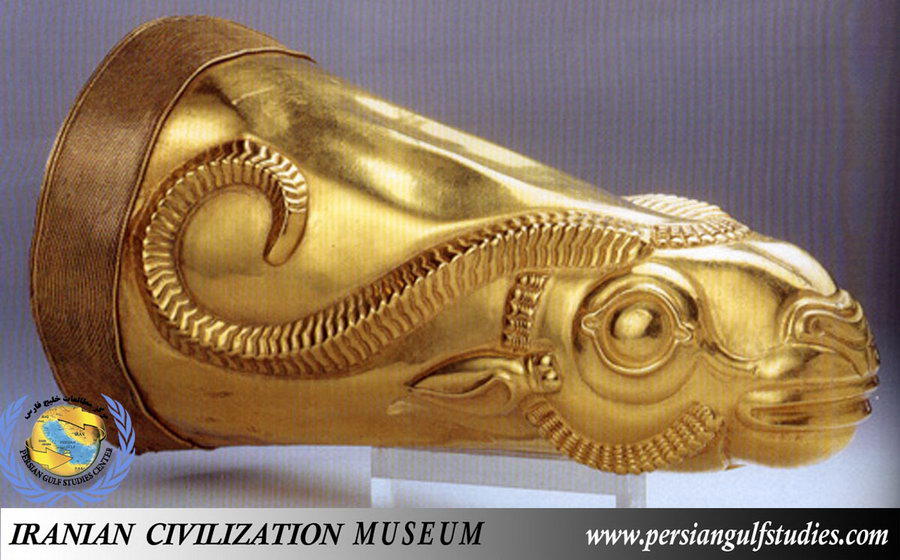 Golden rhyton from Iran's Achaemenid period, 540 BCE. Excavated at Ecbatana. Kept at National Museum of Iran.
Golden rhyton from Iran's Achaemenid period, 540 BCE. Excavated at Ecbatana. Kept at National Museum of Iran.
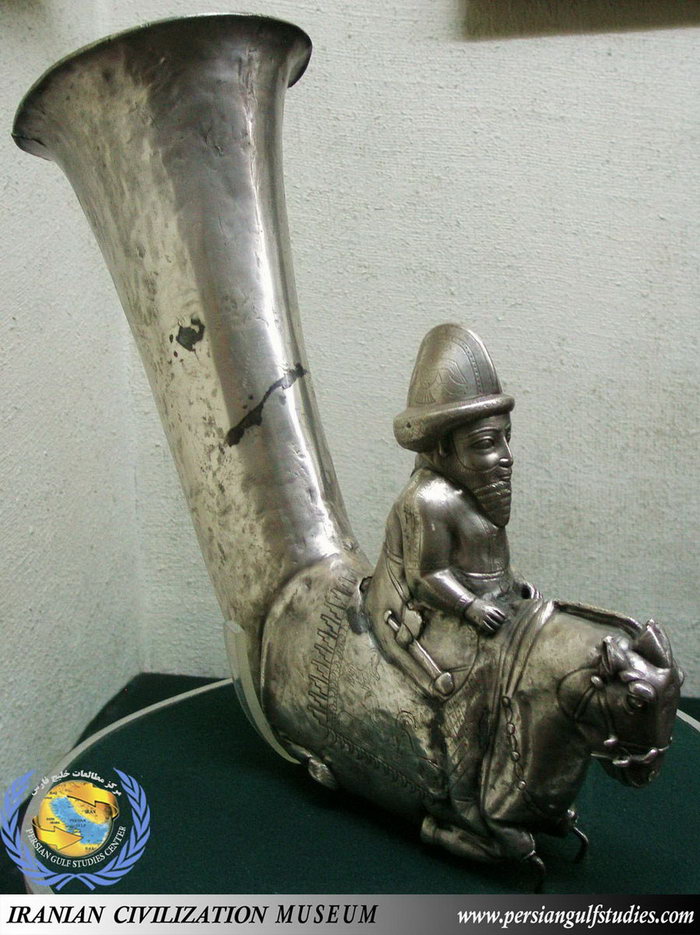 An Achaemenid silver rhyton, erebuni, Armenia
An Achaemenid silver rhyton, erebuni, Armenia
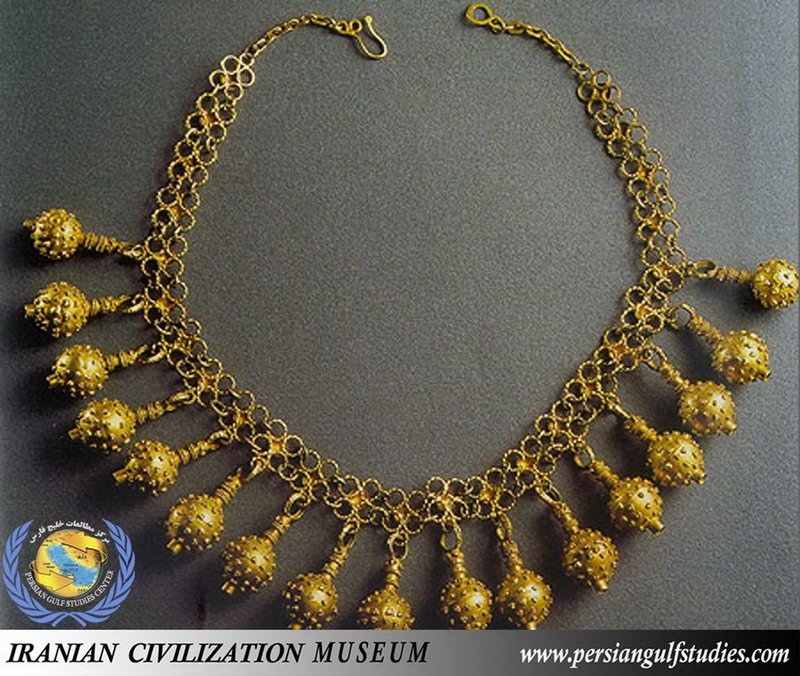 Achamenid Golden Necklace, mid 5th century BCE, Hermitage Museum.
Achamenid Golden Necklace, mid 5th century BCE, Hermitage Museum.
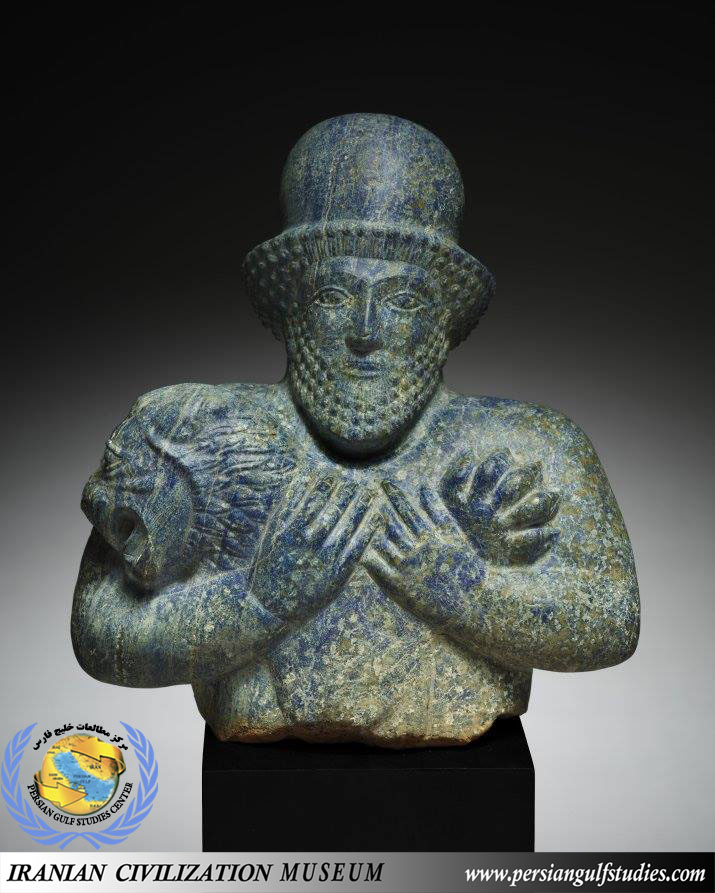 Median Lion Strangler, Iran, Achamenid period, first half 5th Century BC, Cleveland Museum of Art.
Median Lion Strangler, Iran, Achamenid period, first half 5th Century BC, Cleveland Museum of Art.
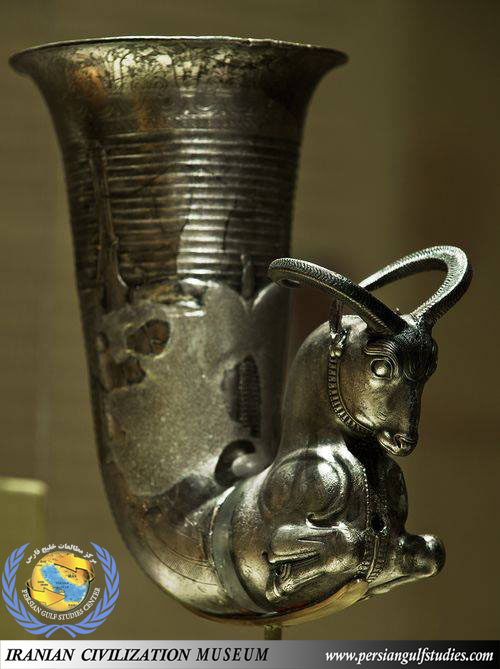 Silver ram rhyton, Iran, mid 5th century BCE, Achaemenid period, Metropolitan Museum.
Silver ram rhyton, Iran, mid 5th century BCE, Achaemenid period, Metropolitan Museum.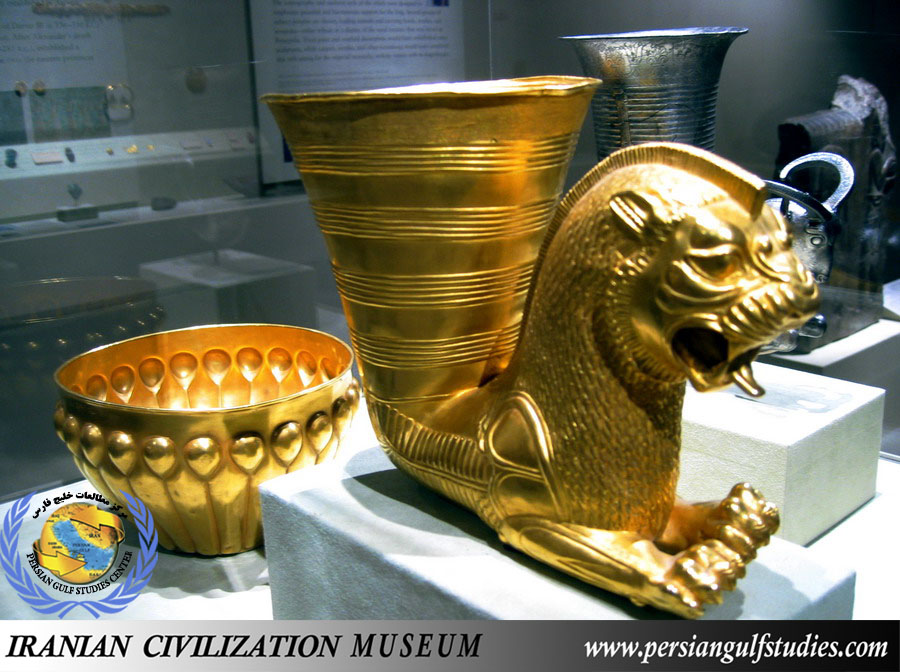 Vessel terminating in the forepart of a fantastic leonine creature, Achaemenid, ca. 5th century B.C. Metropolitan Museum.
Vessel terminating in the forepart of a fantastic leonine creature, Achaemenid, ca. 5th century B.C. Metropolitan Museum.
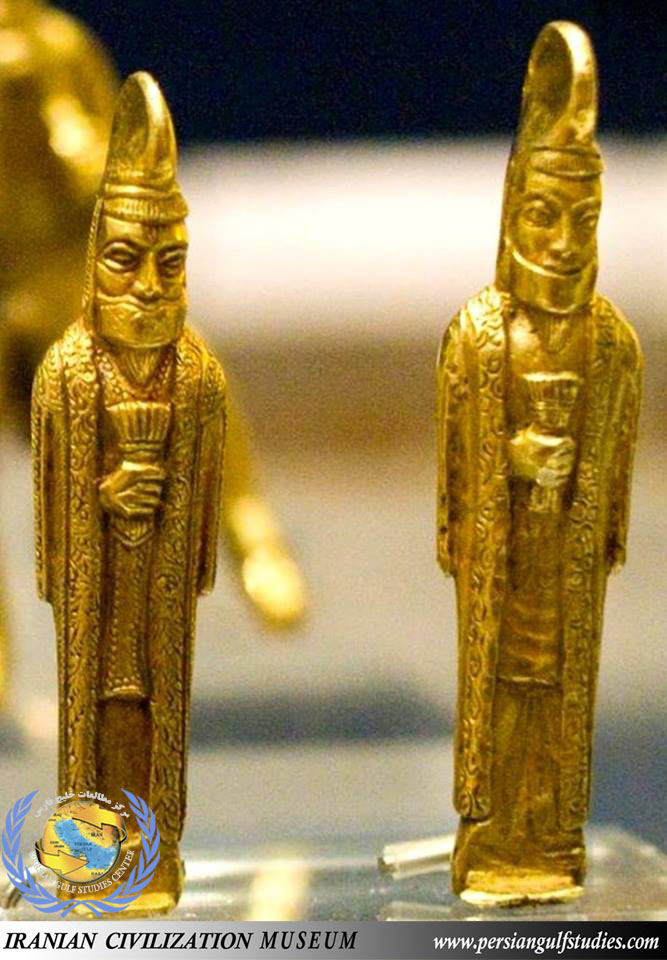 Gold plaque, Oxus treasure of the Achaemenid 5th BC, British Museum.
Gold plaque, Oxus treasure of the Achaemenid 5th BC, British Museum.
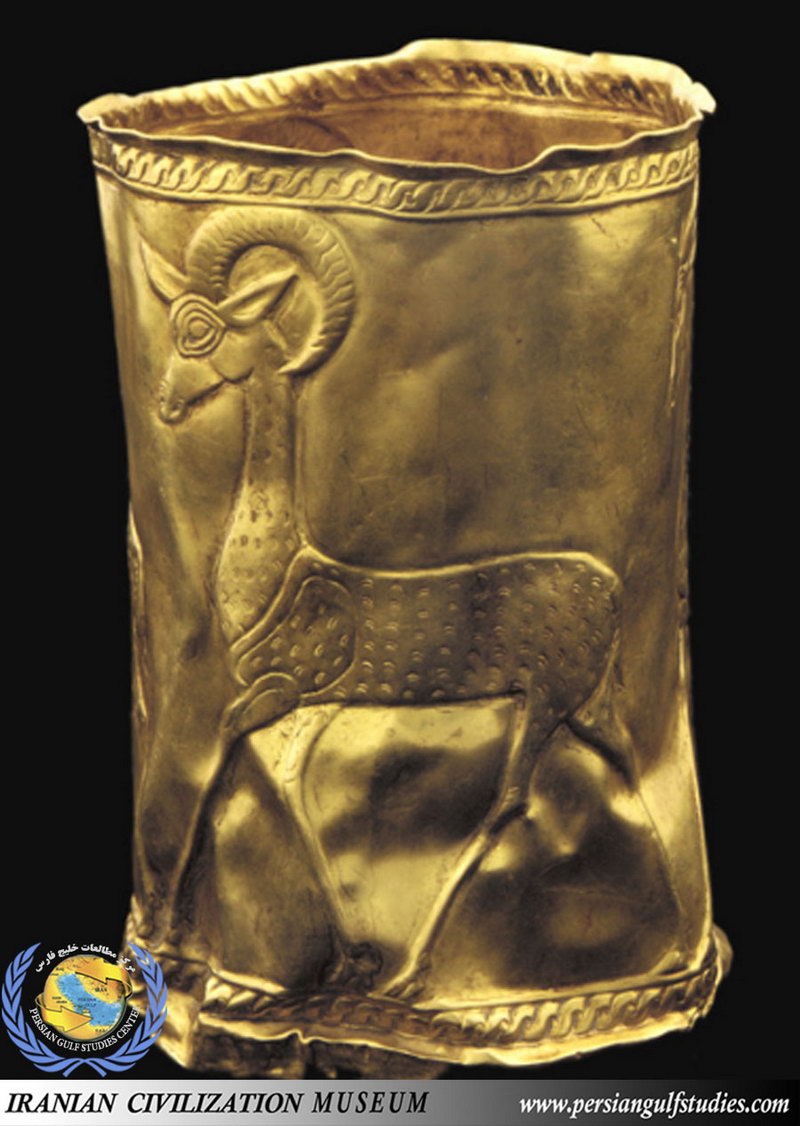 Gold Cup, Achaemenid period, 800 to 700 BC, Southwest Caspian Sea – Iran, Museum of the Smithsonian.
Gold Cup, Achaemenid period, 800 to 700 BC, Southwest Caspian Sea – Iran, Museum of the Smithsonian.
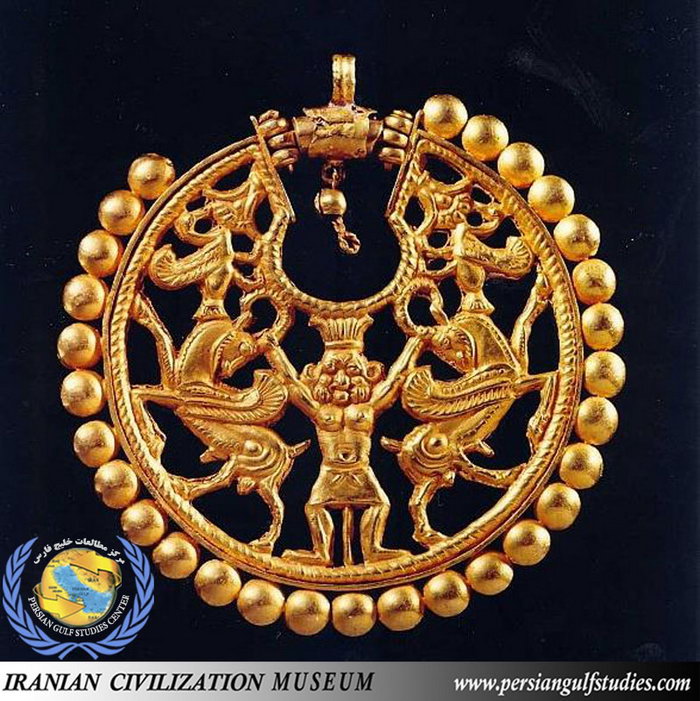 Gold Earring, Achaemenid period, Sixth Century BC.
Gold Earring, Achaemenid period, Sixth Century BC.
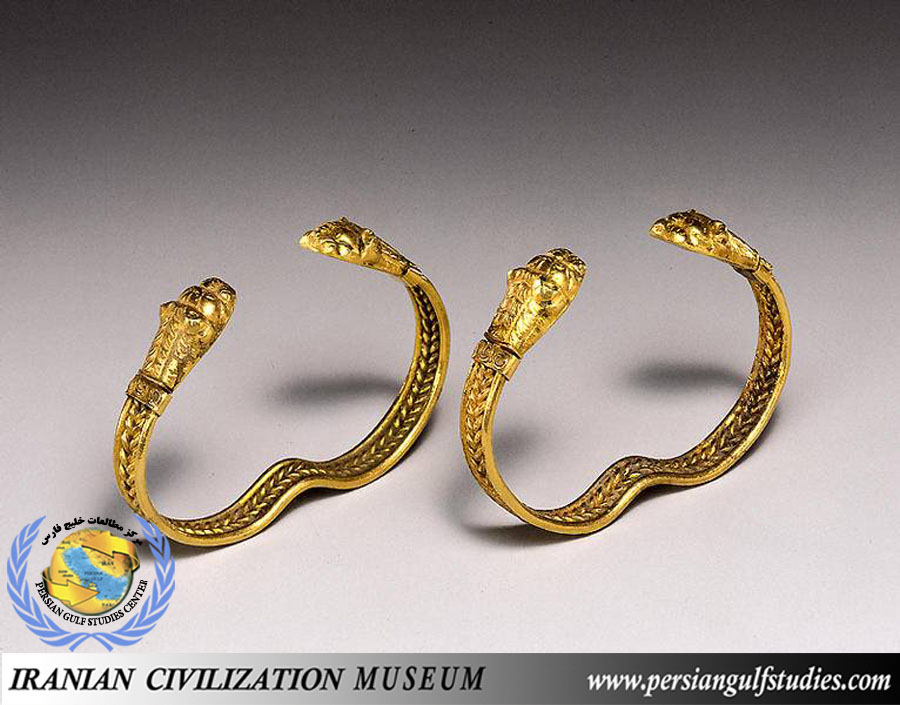 Pair of Bracelets with golden Lion's head Terminals, Year Possibly late 5th to 4th centuries B.C. Japan Miho museum.
Pair of Bracelets with golden Lion's head Terminals, Year Possibly late 5th to 4th centuries B.C. Japan Miho museum.
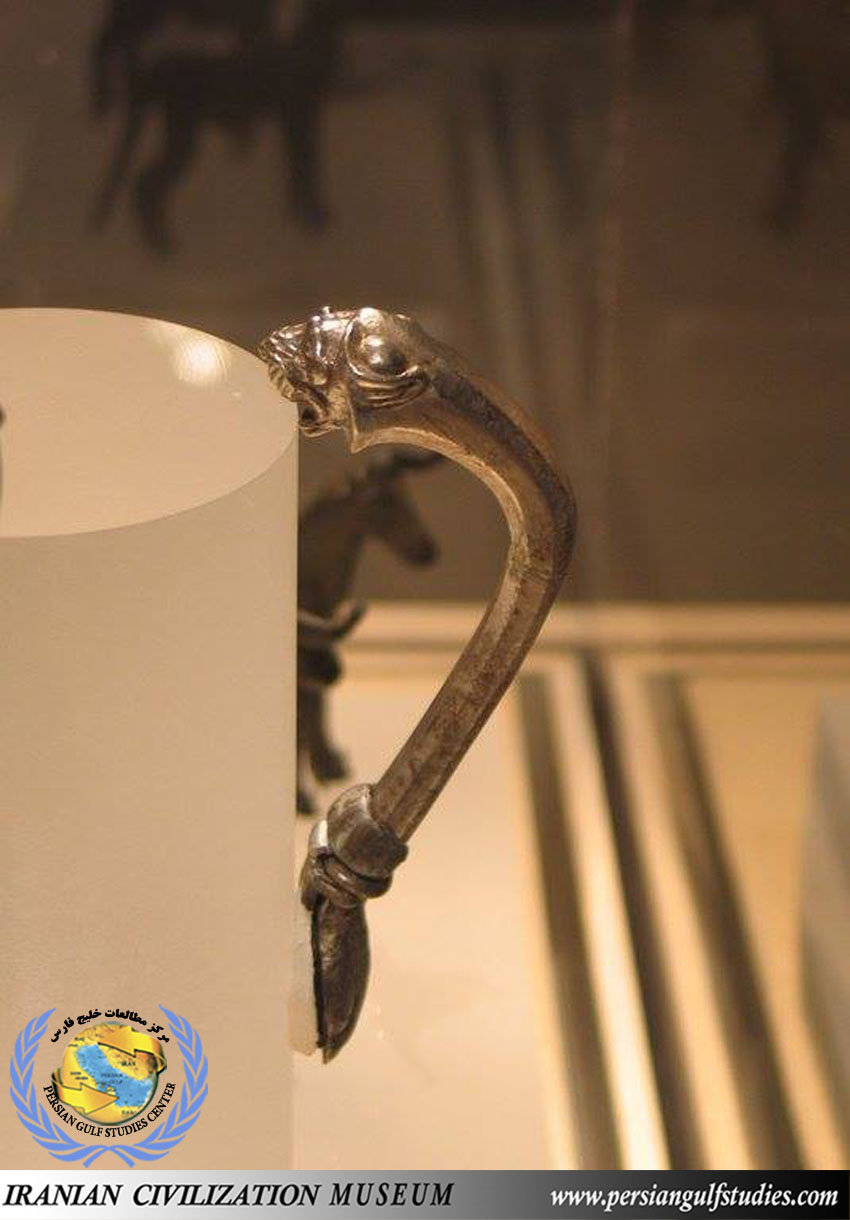 Vessel Handle in Form of Lion, Place found: Tell el-Maskhuta, Egypt, ca. 410 BCE. Achaemenid persian empire, Brooklyn Museum.
Vessel Handle in Form of Lion, Place found: Tell el-Maskhuta, Egypt, ca. 410 BCE. Achaemenid persian empire, Brooklyn Museum.
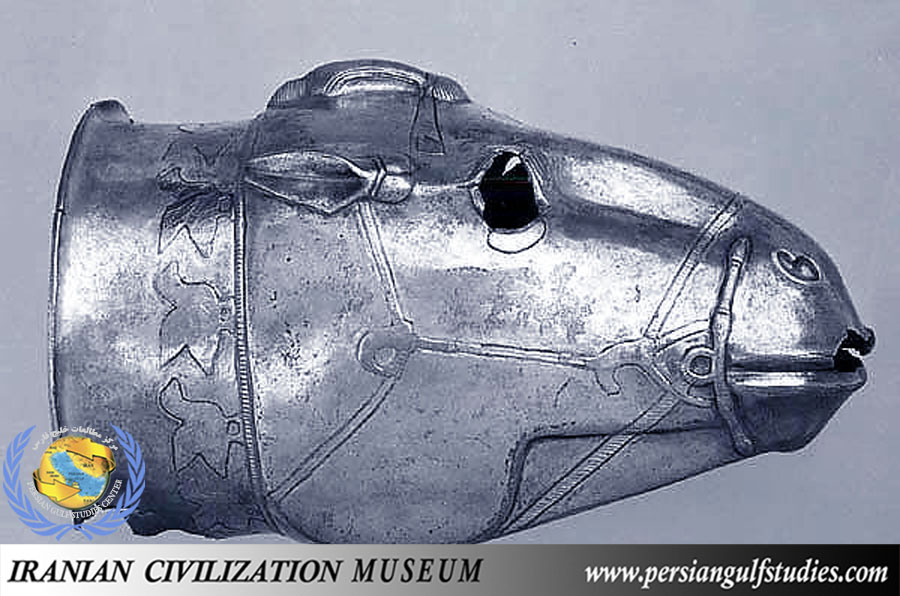 Vessel in the form of a horse's head, Achaemenid persian empire, ca. 5th century B.C., Silver, gilding, The Metropolitan Museum of Art.
Vessel in the form of a horse's head, Achaemenid persian empire, ca. 5th century B.C., Silver, gilding, The Metropolitan Museum of Art.
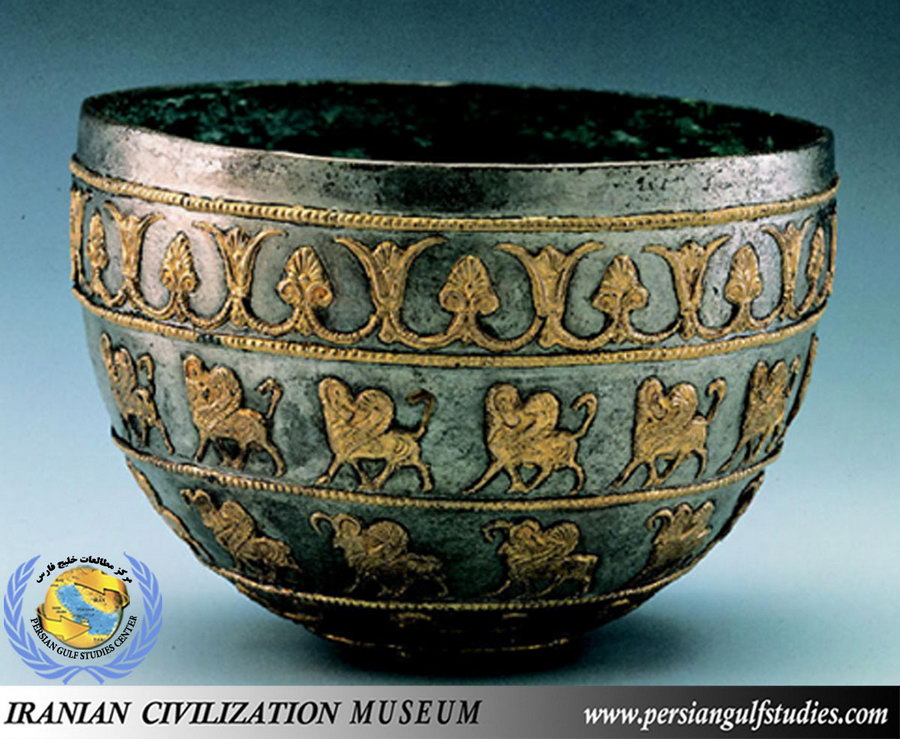 Bowl with Gold Appliques, Achaemenid Empire, Japan Miho Museum.
Bowl with Gold Appliques, Achaemenid Empire, Japan Miho Museum.
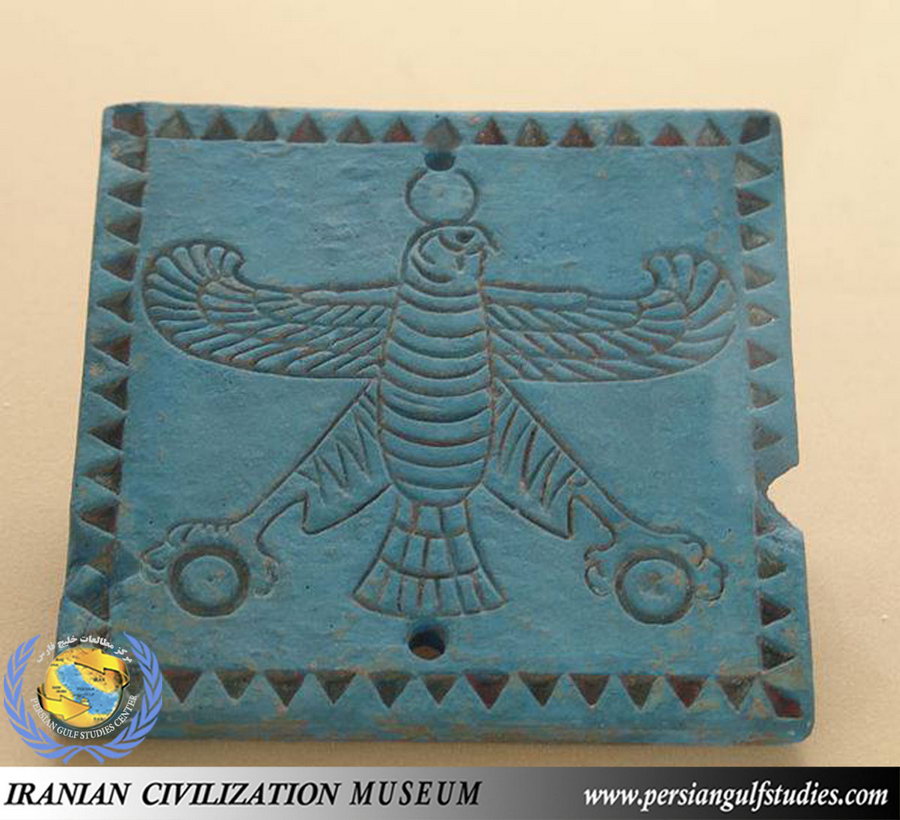 Lapis lazuli and paste plaque from Persepolis, National Museum of Iran.
Lapis lazuli and paste plaque from Persepolis, National Museum of Iran.
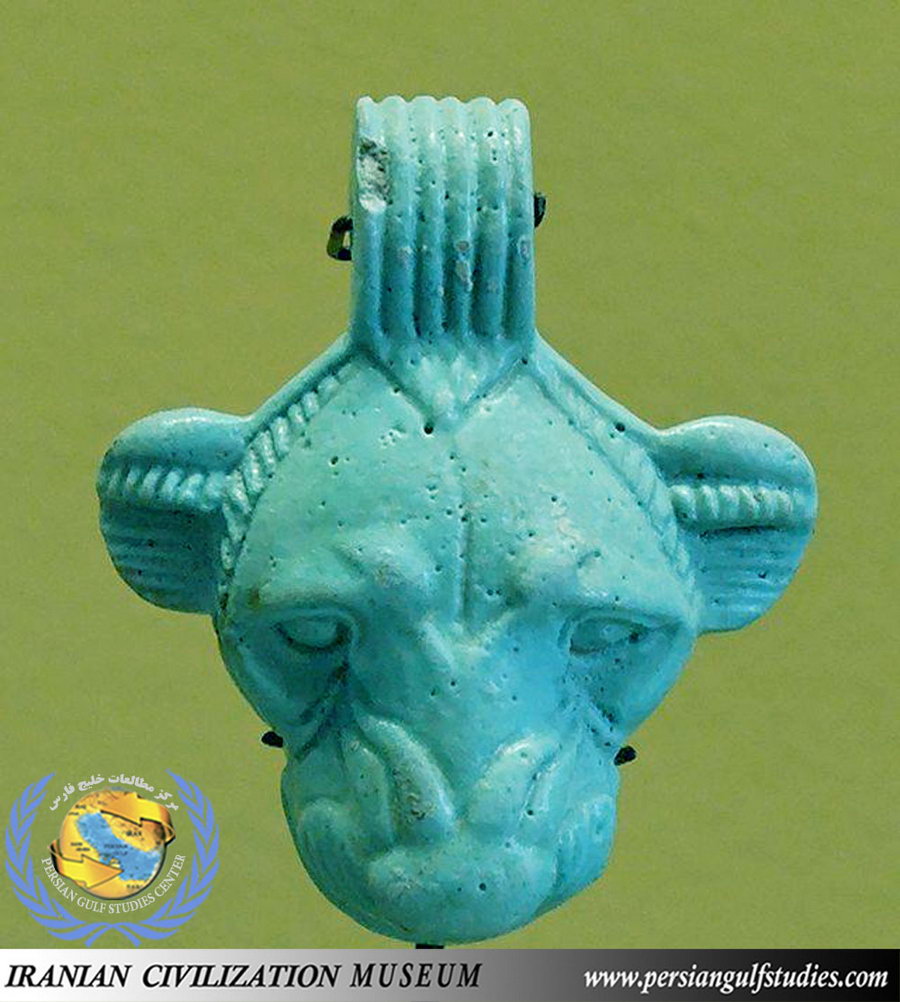 The image of a lioness used as a pendant, late 6th–4th centuries BC, from Susa ا– Department of Oriental Antiquities, Louvre Museum.
The image of a lioness used as a pendant, late 6th–4th centuries BC, from Susa ا– Department of Oriental Antiquities, Louvre Museum.
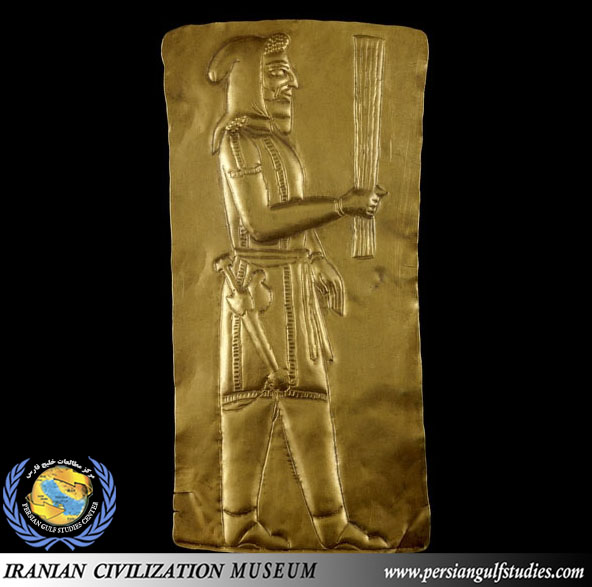 a gold plaque from the Oxus Treasure depicting a made involved in religious ritual, Achaemenid period, 5th-4th century BC. from the region of takht e Kuwad, Tajikistan. British museum.
a gold plaque from the Oxus Treasure depicting a made involved in religious ritual, Achaemenid period, 5th-4th century BC. from the region of takht e Kuwad, Tajikistan. British museum.
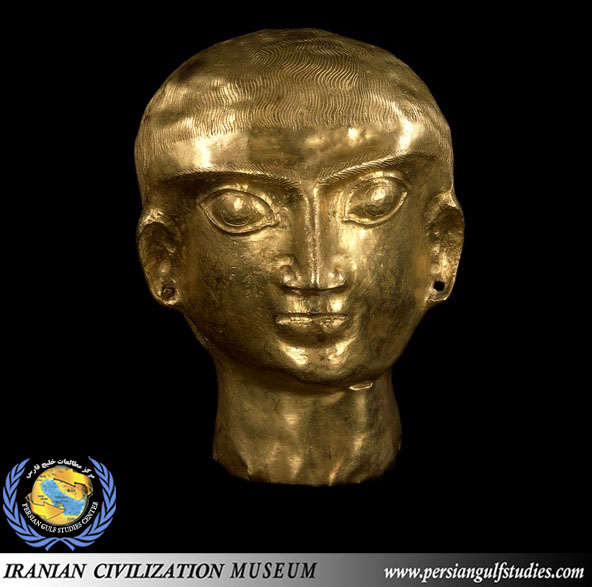 Gold head from the Oxus Treasure. Persian empire, 5th-4th century BC. British museum.
Gold head from the Oxus Treasure. Persian empire, 5th-4th century BC. British museum.
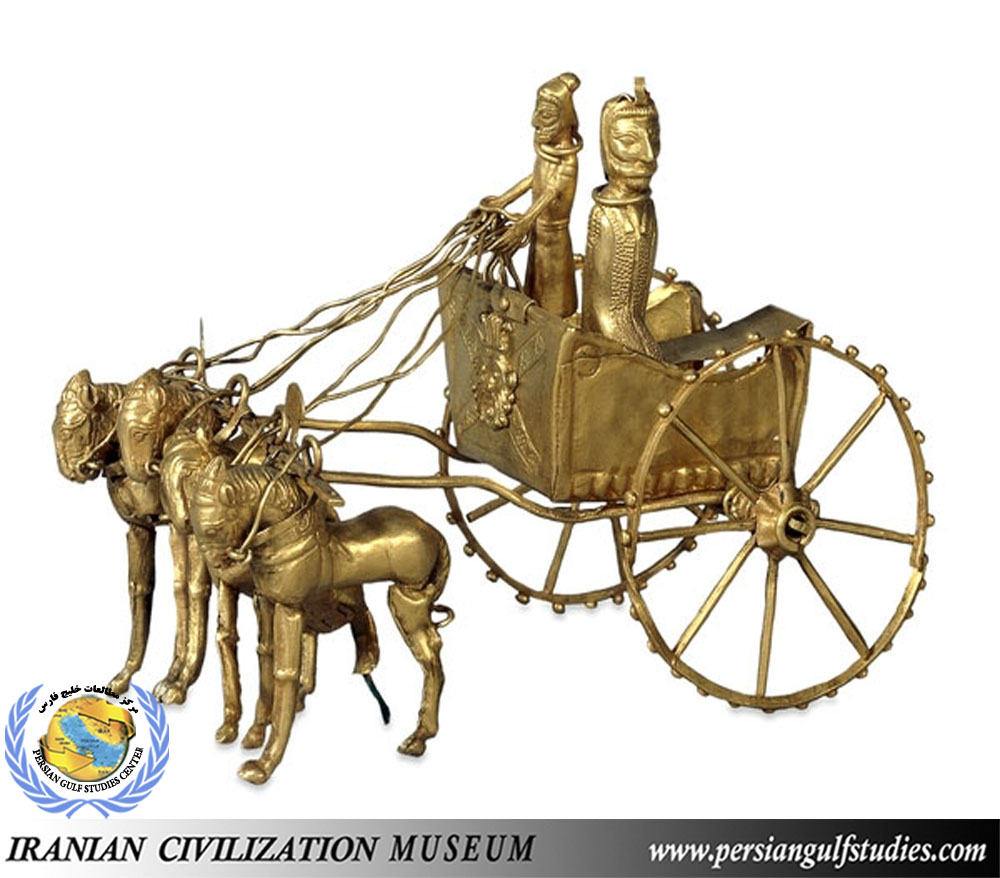 Gold model chariot from the Oxus Treasure, Achaemenid empire, 5th-4th century BC. From Tajikistan. British museum.
Gold model chariot from the Oxus Treasure, Achaemenid empire, 5th-4th century BC. From Tajikistan. British museum.
 Embossed ornament in the from of a lion griffin, from the Oxus Treasure. Achaemenid period, 5th-4th century BC, from the region of takht e Kuwad, Tajikistan. British museum.
Embossed ornament in the from of a lion griffin, from the Oxus Treasure. Achaemenid period, 5th-4th century BC, from the region of takht e Kuwad, Tajikistan. British museum.
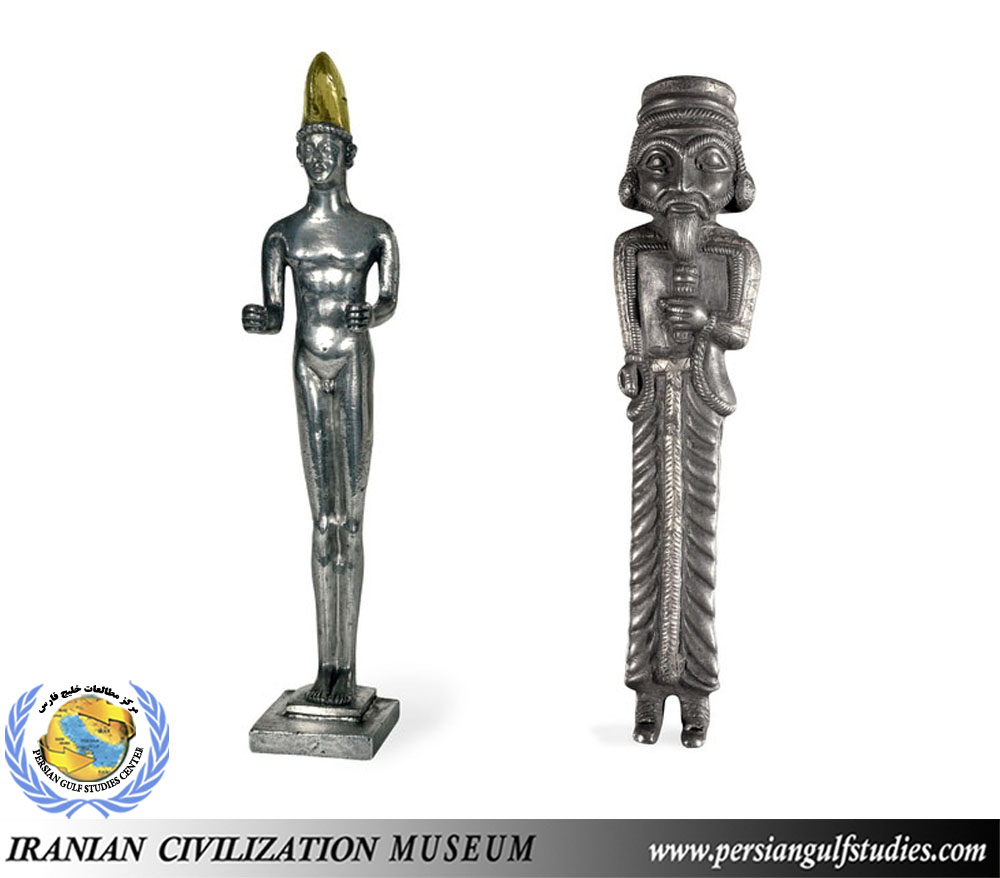 cast silver statuette from the Oxus Treasure. Achaemenid period, 5th-4th century BC,from the region of takht e Kuwad, Tajikistan. British museum.
cast silver statuette from the Oxus Treasure. Achaemenid period, 5th-4th century BC,from the region of takht e Kuwad, Tajikistan. British museum.
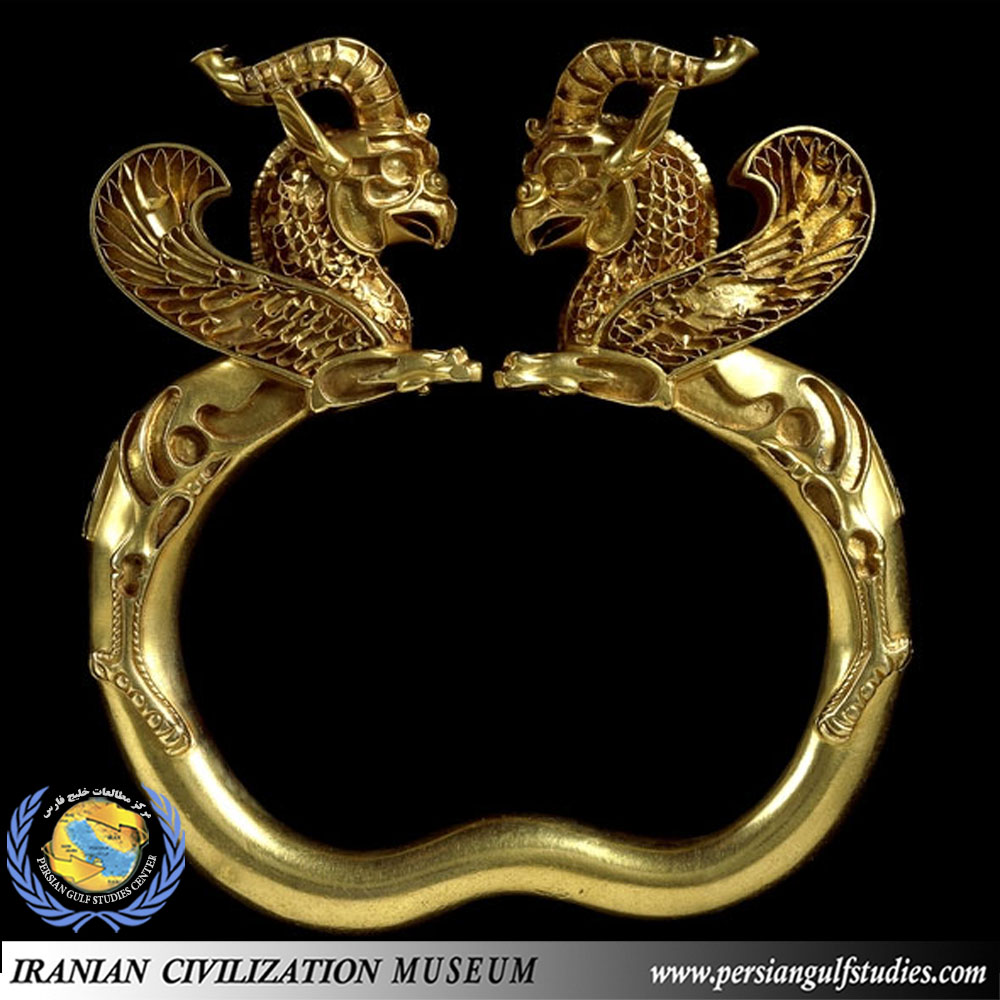 Gold griffin headed armlet from the Oxus Treasure. Achaemenid empire, 5th-4th century BC. British museum.
Gold griffin headed armlet from the Oxus Treasure. Achaemenid empire, 5th-4th century BC. British museum.
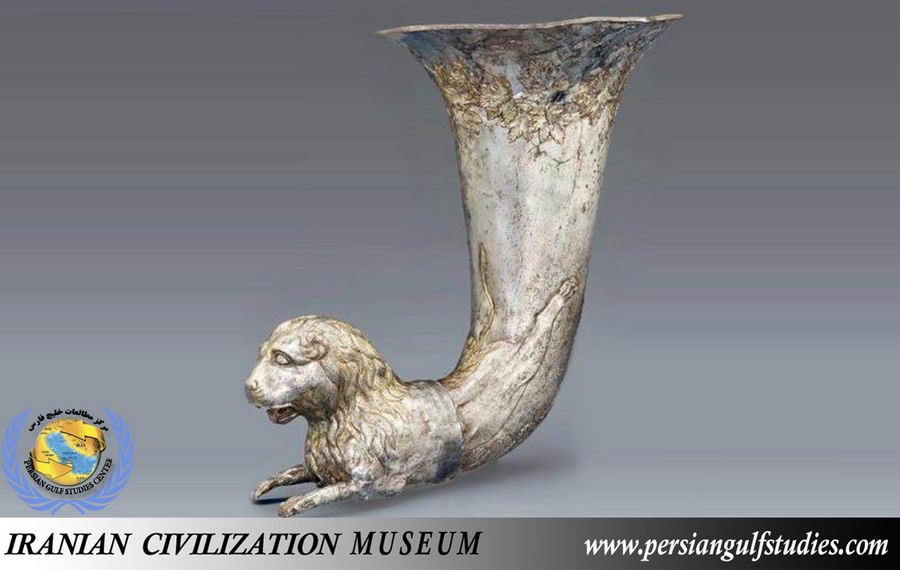 Achaemenid beautiful Rhyton, from the Oxus Treasure, Achaemenid empire, 5th-4th century BC. From Tajikistan. British museum.
Achaemenid beautiful Rhyton, from the Oxus Treasure, Achaemenid empire, 5th-4th century BC. From Tajikistan. British museum.
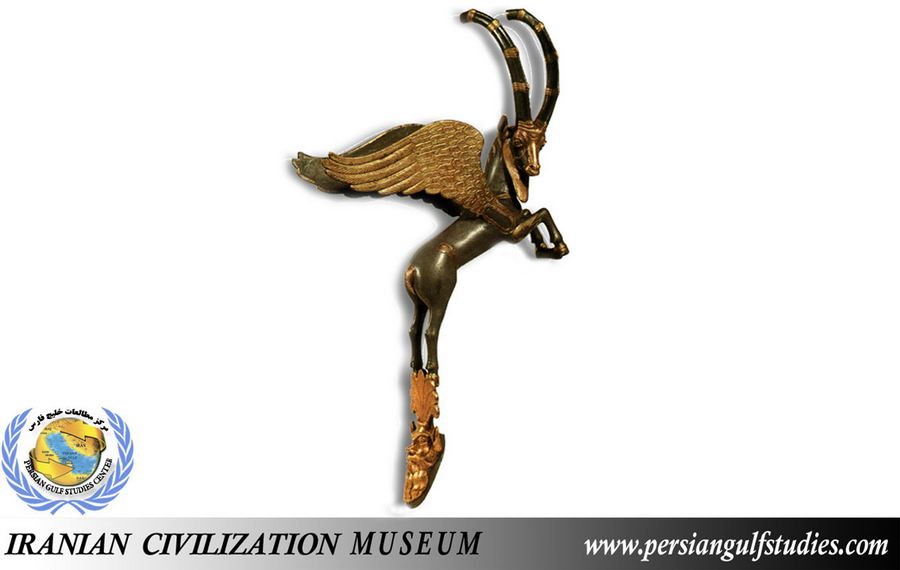 Vessel handle in the from of a winged ibex with its hooves resting on a mask of Silenus, from the Oxus Treasure, Achaemenid empire, 5th-4th century BC. From Tajikistan. British museum.
Vessel handle in the from of a winged ibex with its hooves resting on a mask of Silenus, from the Oxus Treasure, Achaemenid empire, 5th-4th century BC. From Tajikistan. British museum.
Achaemenid Magnificent Heritage
Palaces, temples, tombs, buildings &...
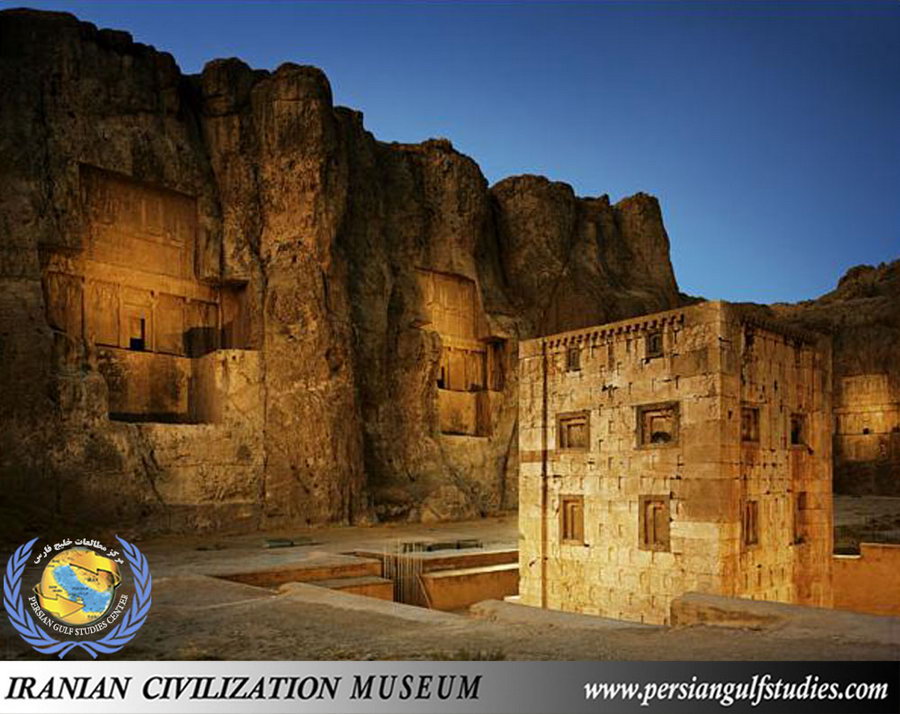 Naqsh-e Rostam is a site believed by archaeologists to have been a cemetery for Persepolis, where Achaemenid, Parthian and Sassanid royalty were laid to rest. Located about 3-4 kilometers northwest of Persepolis in Iran's Fars province, the site contains funerary related works belonging to the Elamite (second millennium BCE), Achaemenid (550-330 BCE) and Sassanid (226-651 CE) eras.
Naqsh-e Rostam is a site believed by archaeologists to have been a cemetery for Persepolis, where Achaemenid, Parthian and Sassanid royalty were laid to rest. Located about 3-4 kilometers northwest of Persepolis in Iran's Fars province, the site contains funerary related works belonging to the Elamite (second millennium BCE), Achaemenid (550-330 BCE) and Sassanid (226-651 CE) eras.
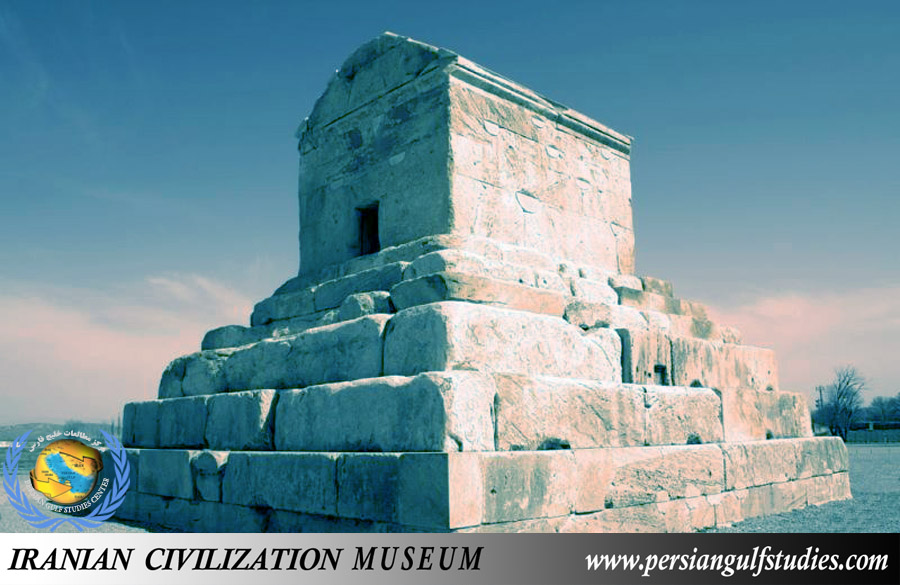 Cyrus the great tomb in Pasargadae, capital of the Achaemenid Empire built by Cyrus the Great (559–530 BC), located near the city of Shiraz. The site became a UNESCO World Heritage Site in 2004.
Cyrus the great tomb in Pasargadae, capital of the Achaemenid Empire built by Cyrus the Great (559–530 BC), located near the city of Shiraz. The site became a UNESCO World Heritage Site in 2004.
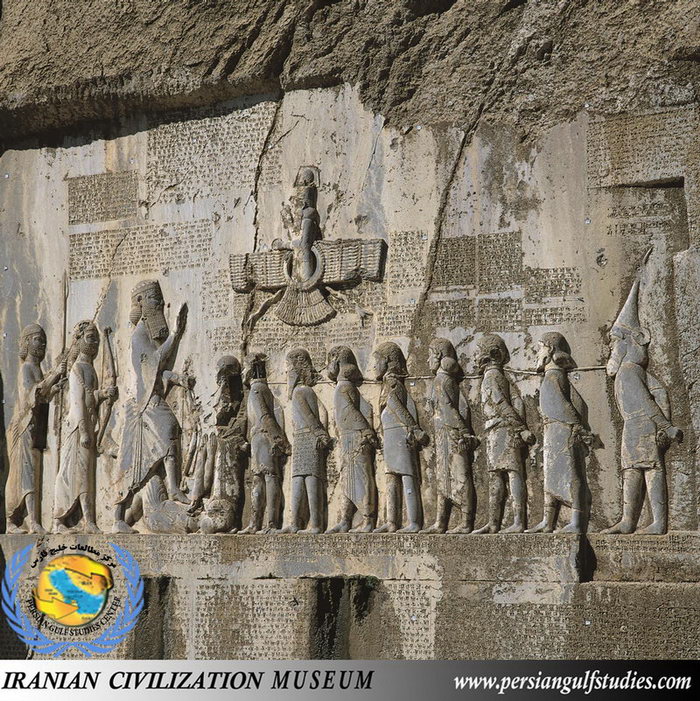 The Behistun (Bistoon) great Inscription. is a multi-lingual inscription located on Mount Behistun in the Kermanshah Province of Iran, near the city of Kermanshah in western Iran. The site became a UNESCO World Heritage Site in 2006.
The Behistun (Bistoon) great Inscription. is a multi-lingual inscription located on Mount Behistun in the Kermanshah Province of Iran, near the city of Kermanshah in western Iran. The site became a UNESCO World Heritage Site in 2006.
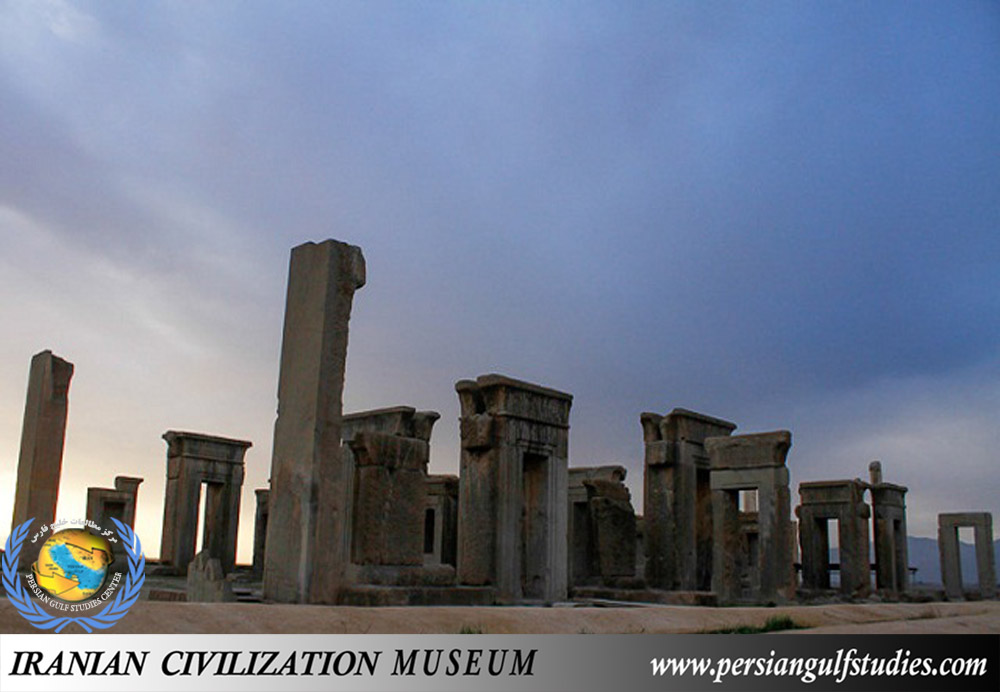 Persepolis, literally meaning "city of Persians", was the ceremonial capital of the Achaemenid Empire (ca. 550–330 BCE). Persepolis is situated 70 km northeast of city of Shiraz in Fars Province in Iran. The earliest remains of Persepolis date back to 515 BCE. It exemplifies the Achaemenid style of architecture. UNESCO declared the ruins of Persepolis a World Heritage Site in 1979.
Persepolis, literally meaning "city of Persians", was the ceremonial capital of the Achaemenid Empire (ca. 550–330 BCE). Persepolis is situated 70 km northeast of city of Shiraz in Fars Province in Iran. The earliest remains of Persepolis date back to 515 BCE. It exemplifies the Achaemenid style of architecture. UNESCO declared the ruins of Persepolis a World Heritage Site in 1979.
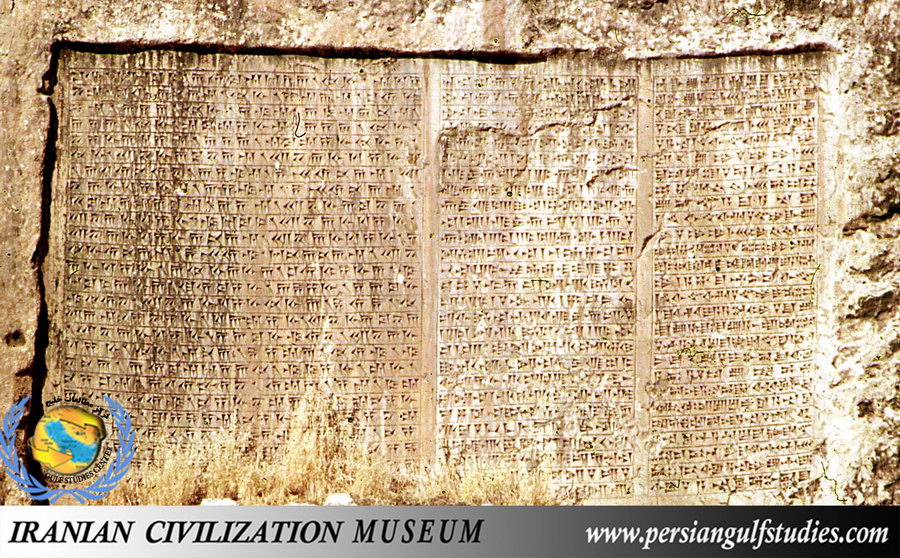 A stereotyped trilingual inscription of Xerxes the Great from the 5th century BC in turkey ( Van province) is inscribed upon a smoothed section of the rock face, some 20 meters (60 feet) above the ground near the fortress. The niche was originally carved out by Xerxes' father Darius the great, but left the surface blank. The inscription survives in near perfect condition and is divided into three columns of 27 lines written in (from left to right) Old Persian, Babylonian, and Elamite. It is the only known Achaemenid royal inscription located outside of Iran.
A stereotyped trilingual inscription of Xerxes the Great from the 5th century BC in turkey ( Van province) is inscribed upon a smoothed section of the rock face, some 20 meters (60 feet) above the ground near the fortress. The niche was originally carved out by Xerxes' father Darius the great, but left the surface blank. The inscription survives in near perfect condition and is divided into three columns of 27 lines written in (from left to right) Old Persian, Babylonian, and Elamite. It is the only known Achaemenid royal inscription located outside of Iran.
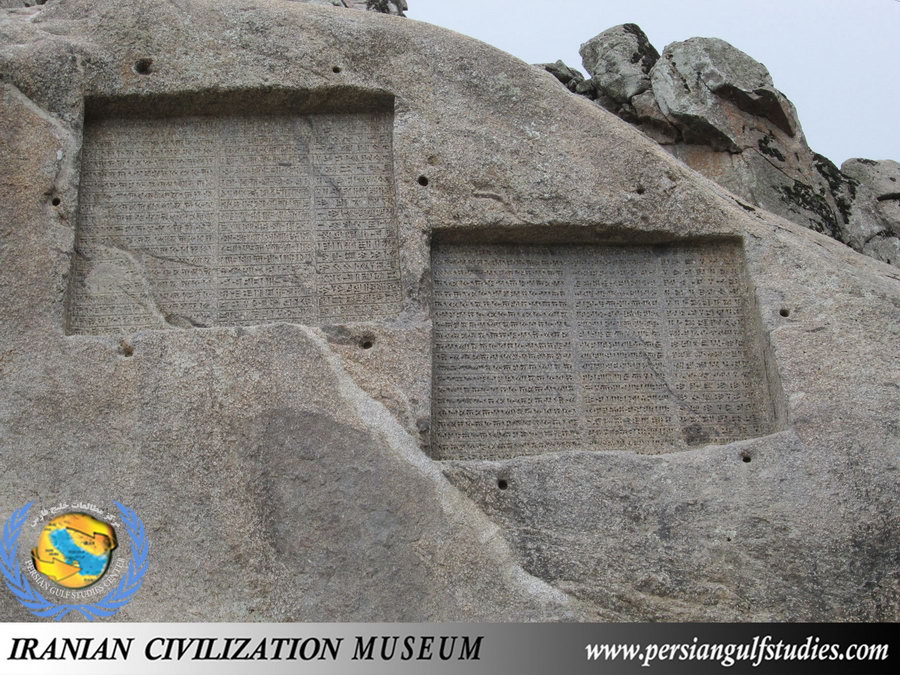 Ganj Nameh is an ancient inscription, 5 km southwest of Hamedan, on the side of Alvand Mountain in Iran. The inscription, which has been carved in granite, is composed of two sections. One (on the left) ordered by Darius the Great (521-485 BC) and the other (on the right) ordered by Xerxes the Great (485-65 BC). Both sections, which have been carved in three ancient languages of Old Persian, Neo-Babylonian and Neo-Elamite, start with praise of God (Ahura Mazda) and describe the lineage and deeds of the mentioned kings.
Ganj Nameh is an ancient inscription, 5 km southwest of Hamedan, on the side of Alvand Mountain in Iran. The inscription, which has been carved in granite, is composed of two sections. One (on the left) ordered by Darius the Great (521-485 BC) and the other (on the right) ordered by Xerxes the Great (485-65 BC). Both sections, which have been carved in three ancient languages of Old Persian, Neo-Babylonian and Neo-Elamite, start with praise of God (Ahura Mazda) and describe the lineage and deeds of the mentioned kings.
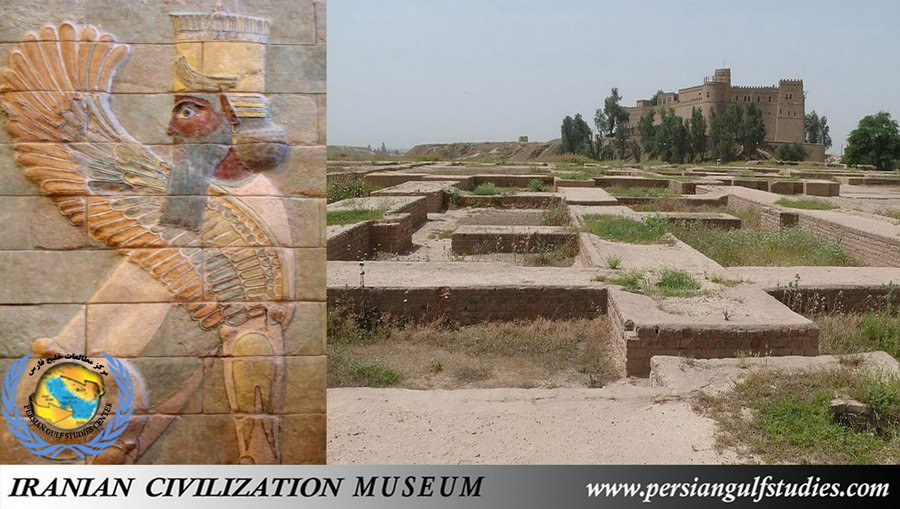 Remnant of the Apadana at Susa built by Darius the great. Only the foundations remain, but there was once a large hall of columns located on this structure. also A creature with a head of a man, body of a lion, and wings of an eagle, resembling a "lamassu," from the palace of Darius, Susa (Iran's Khuzestan province).
Remnant of the Apadana at Susa built by Darius the great. Only the foundations remain, but there was once a large hall of columns located on this structure. also A creature with a head of a man, body of a lion, and wings of an eagle, resembling a "lamassu," from the palace of Darius, Susa (Iran's Khuzestan province).
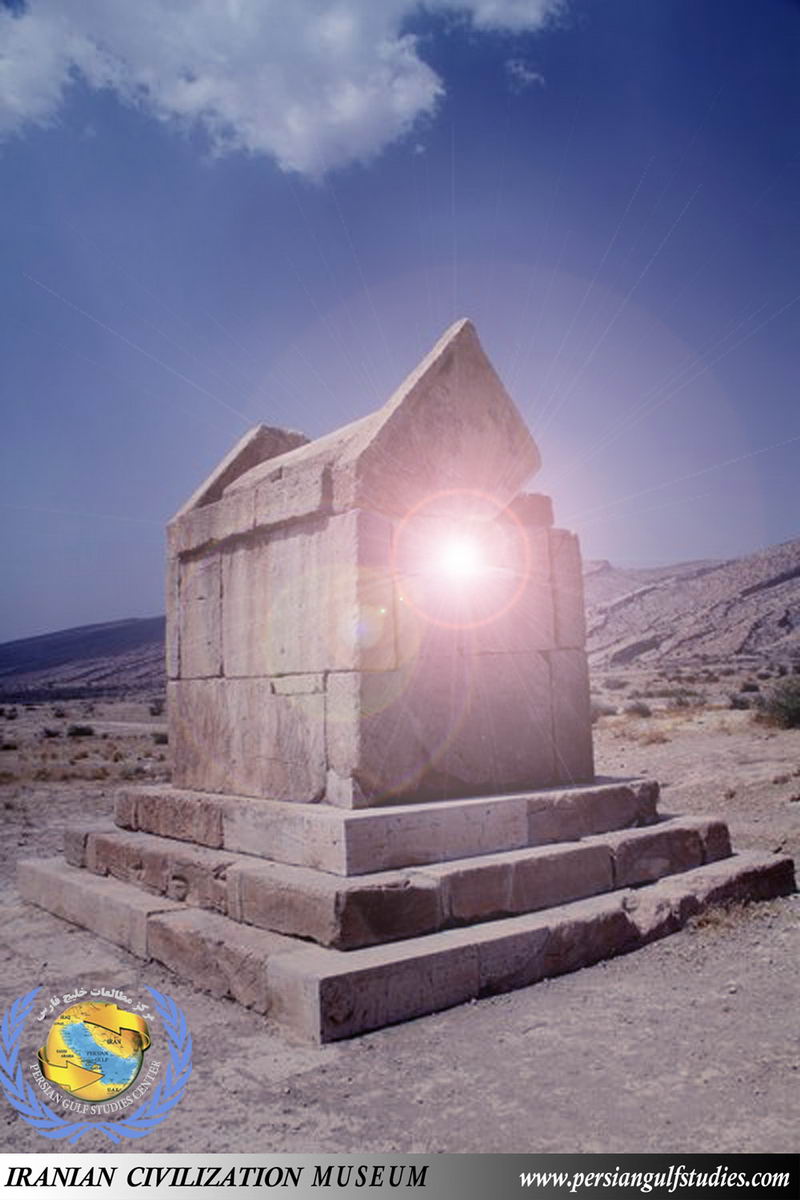 grave's daughter, the daughter persian Achaemenid . Graves daughter, who built much like the Achaemenid tomb of Cyrus the great at Pasargadae in the East Road Borazjan, near at persian gulf - Kazeroon Iran is located in a narrow region and dating back to the sixth century before Christ returns. The building dates back to the Borazjan confirmed that Ardeshir Sassanid palace near the ancient monument is located. It is likely that the tomb of the Achaemenid Cyrus is the daughter or sister.
grave's daughter, the daughter persian Achaemenid . Graves daughter, who built much like the Achaemenid tomb of Cyrus the great at Pasargadae in the East Road Borazjan, near at persian gulf - Kazeroon Iran is located in a narrow region and dating back to the sixth century before Christ returns. The building dates back to the Borazjan confirmed that Ardeshir Sassanid palace near the ancient monument is located. It is likely that the tomb of the Achaemenid Cyrus is the daughter or sister.
